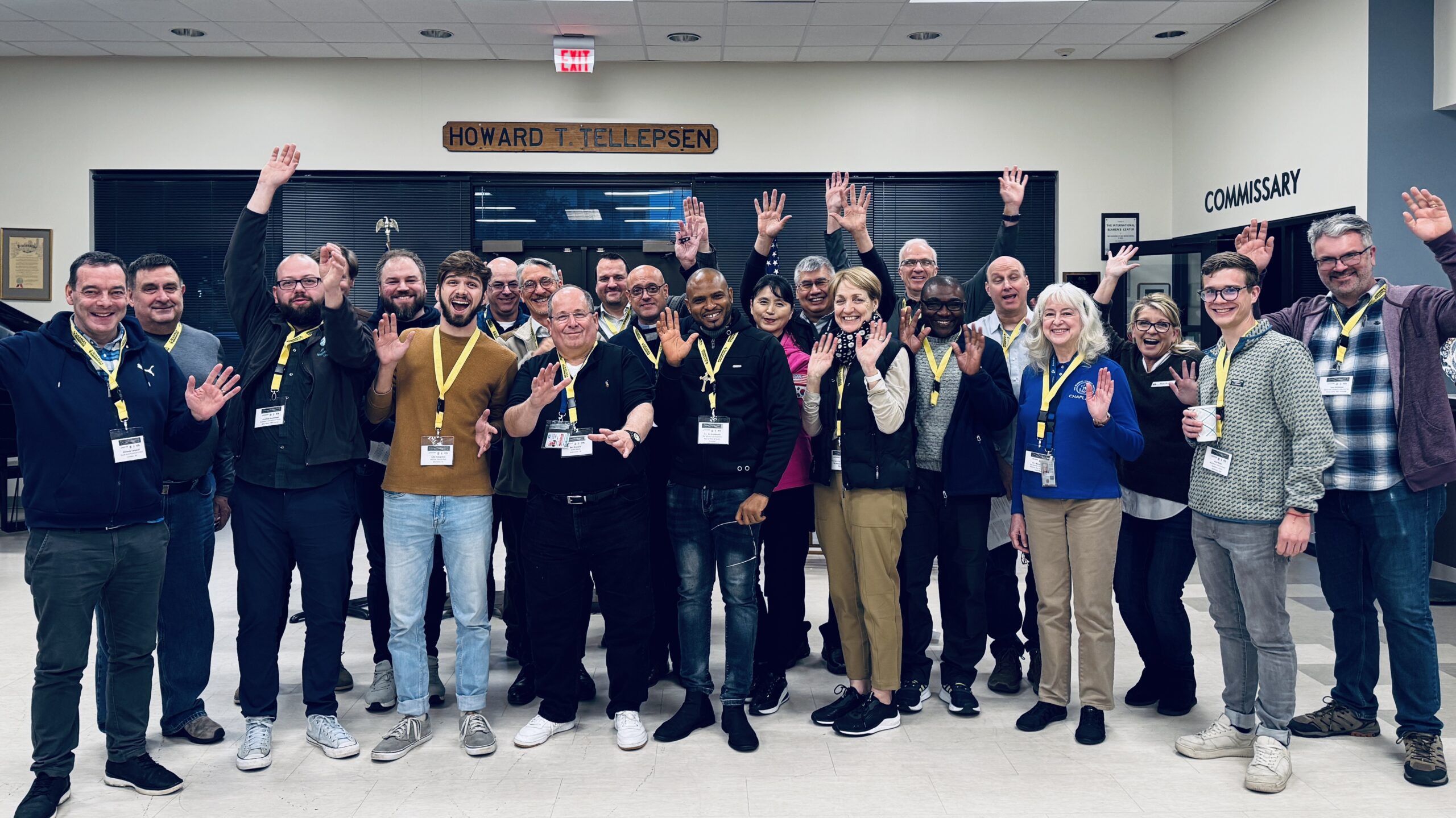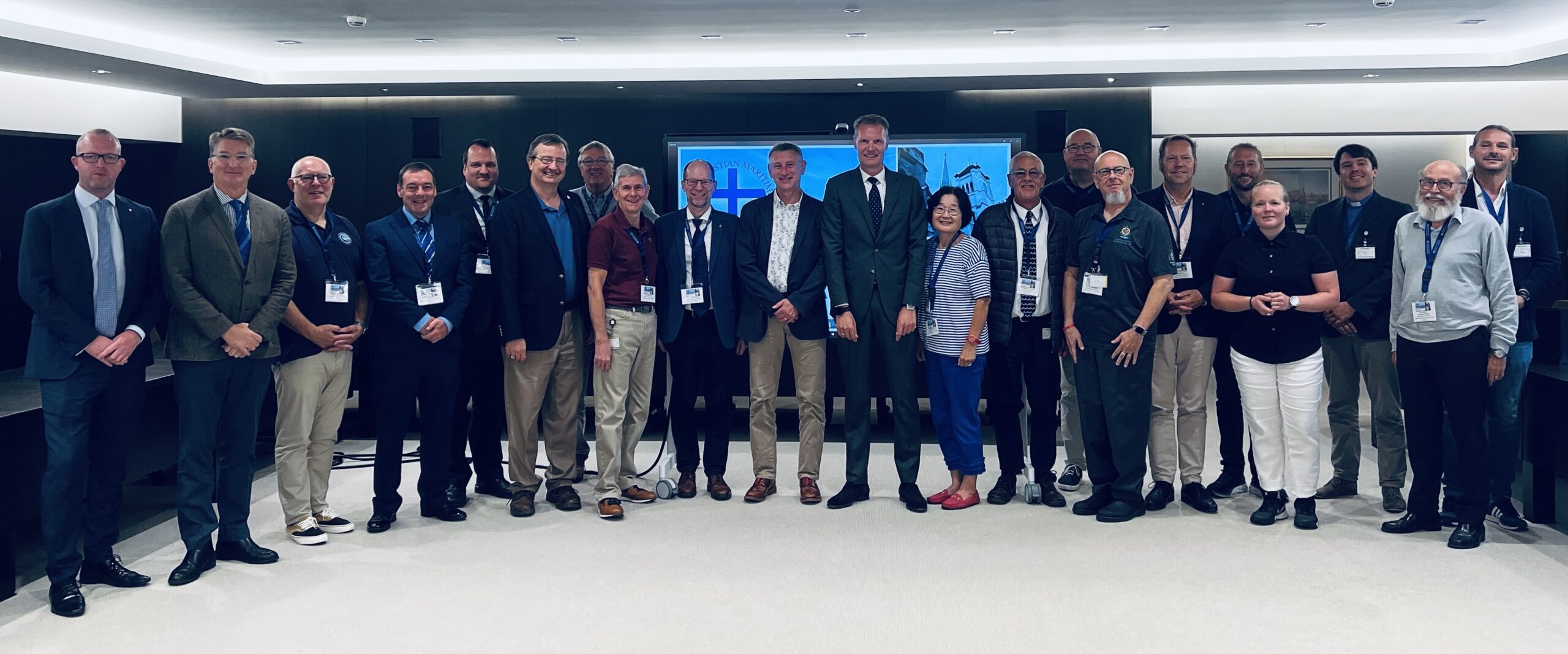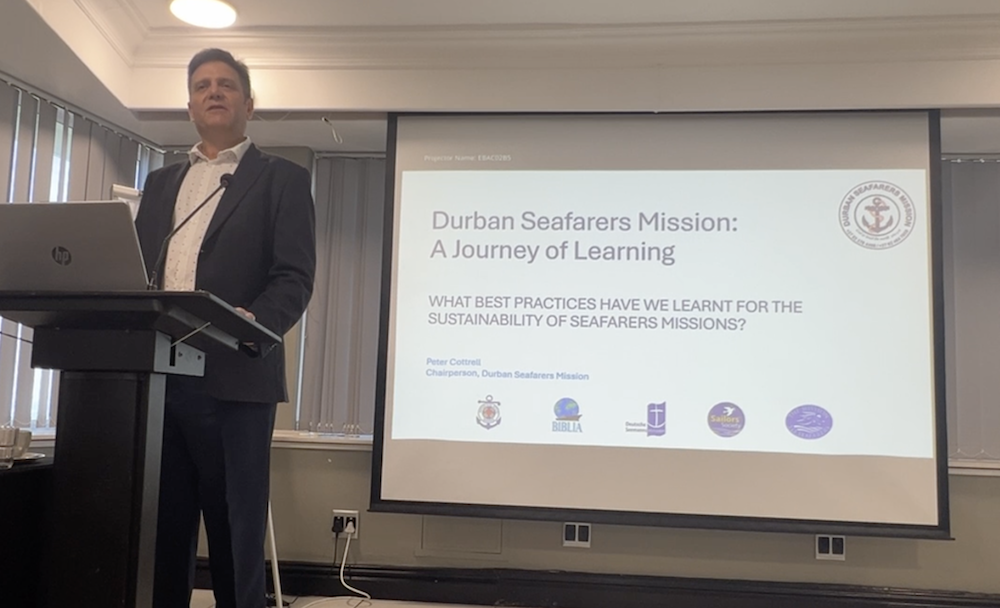During the Seafarers’ Welfare Conference 2024 of the Mission to Seafarers Australia, The MARE Report sat down with Bishop Jeremy James, Bishop of Willochra, to learn more about what a liaison bishop does in the Anglican tradition.
The MARE Report: We’ve been impressed with your humble leadership here at the conference, and we thought you would be a good person to talk to.
In The MARE Report, we share best practices and ideas for people to learn from others in seafarers’ welfare, to do things better or be inspired to do more. One of the peculiar tasks within Anglicanism and Catholicism, and a few other groups, is to have a “liaison bishop” who does liaison work. We want to learn about the job of such a person, and how to do it better.
First, could you introduce yourself and just say how you became the liaison bishop?
Bishop Jeremy James: It’s a privilege to be interviewed for NAMMA and ICMA. It’s been great to meet you. I became the liaison bishop around eight months ago. Australia has traditionally had two liaison bishops because of the size of the continent and the spread of the missions, one on the West Coast and one on the East Coast. I’m actually neither; I’m right in the middle. But my diocese in South Australia has five mission stations. My predecessor in the role, in Willochra, was the liaison bishop, so it fell in a kind of natural line of succession to me.
The job excites me. I worked for the Mission to Seafarers many years ago as a student assistant. I came out here on January 1, 1986, and worked for two years in Port Hedland, which is largely an iron ore and salt export port, now the largest iron ore exporting port in the country. It was long, arduous work, but I loved every minute of it. I loved the engagement with a world that I’d grown up in sight of in England. I grew up on the south coast of England; I was aware of ships but knew really nothing about them or the world of seafaring.
This role makes me co-chair of the National Council. We meet by Zoom every six weeks, and every year, as we’re having now, we have a national conference. It’s a great opportunity to bring industry reps as well as staff from our 27 stations all together. My tip to anybody taking on the role would be to read a lot, listen a lot, and meet a lot.
The MARE Report: What is the liaison bishop supposed to do, and where does the role come from?
Bishop Jeremy James: The role is appointed by the General Synod, in conversation with the house of bishops. There are 44 bishops in Australia, and my role is to report back to the house of bishops when they meet this November on what has happened. I will, of course, give a report to the primate next week, which will be a written short report, but a longer, more detailed report will be prepared. So, it’s really keeping the national church informed about one of the wider mission ministries. In truth, unless people are by the coast or have a particular interest in seafaring, often the knowledge of seafaring is fairly limited.
The MARE Report: There are two sides to our next question. What have you learned about the mission to seafarers since you started being liaison bishop that you didn’t previously know, even though you were involved in it before? Conversely, what have you learned about the church since you started as a liaison? How has this given you a new perspective on the mission of the church in general?
Bishop Jeremy James: I’ve been impressed that the mission to seafarers has a natural place in the seafaring community. At this conference, we’ve heard from delegates from unions, AMSA, ICMA, the pilots, the shipping agents, and the port authorities. There has been an ease with the mission, even though we’re a not-for-profit and largely dealing with volunteers working in a highly specialized and professional industry. That’s taught me that the mission has a particular gift, along with Stella Maris, to give to the wider seafaring community. It’s a gift of welcome, hospitality, seeing things, and having access to seafarers in a way that other professionals may not.
What has it taught me about the church? The mission to seafarers is actually the largest mission in the Anglican Communion. Ironically, it is probably the least well-known. It’s a mission that, by definition, looks outward, out from the land. We don’t have children to sponsor or people to write to. We’re dealing with what is largely an invisible, and at times, highly vulnerable community. In a curious way, similar to the founder of the missions to seafarers, who recognized that seafarers were almost unknown and had no voice. Seafarers don’t do what normal people do. They don’t have weekends off to go to the footy, or go for a walk in the park with their family.
Another thing I’m learning is that, thankfully, the seafaring world is changing in terms of its gender balance. We’ve seen that at the conference where we’ve had several valuable insights from pilots, seafarers, and naval architects about the need to change not only the architecture but also the mindset.
The MARE Report: Thank you very much for your time.
Bishop Jeremy James: It’s been a pleasure.





